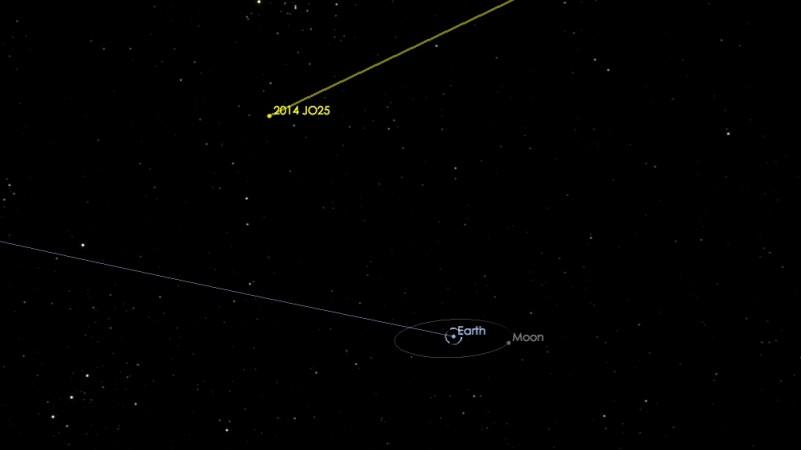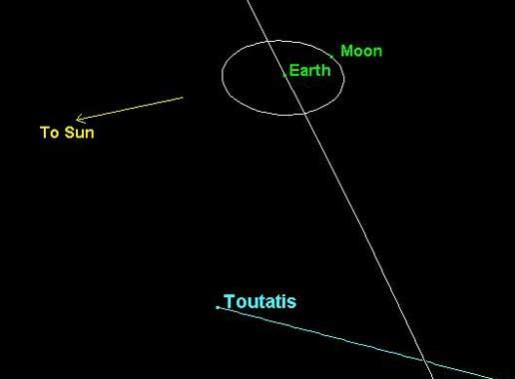
A giant asteroid -- 2014 JO25 -- discovered three years ago, will pass by Earth on April 19. The encounter with this near-Earth object (NEO) will take place at a proximity of 1.1 million miles (1.8 million kilometres), or 4.6 times the distance between the Earth and the Moon.
NASA astronomers claim that the space rock will pass safely by and there is no chance of a collision.
In May 2014, 2014 JO25 was spotted by astronomers during the Catalina Sky Survey carried out near Tucson, Arizona. This asteroid belongs to the Apollo group; a group of near-Earth asteroids.
This space rock was found to be twice more reflective than the Moon, according to NASA's NEOWISE mission. Though the orbit of the asteroid is well-known, astronomers have yet to find out more about its physical properties. The astronomical event on April 19 will provide astronomers ample opportunity to analyse the space rock.
The asteroid will be visible in the night sky after April 19, when it passes by Earth as it approaches from the direction of Sun. Small optical telescopes will be able to spot 2014 JO25 for a night or two before it heads back out into deep space. During this period its luminosity is estimated to increase to magnitude 11.
This would be asteroid 2014 JO25's closest approach to Earth in the last four centuries, and will remain the nearest one for the next five centuries.

Earth is 'visited' by small asteroids many times a week, but rarely does an asteroid as big as this approach so close. The last time we were visited by a behemoth, it was by asteroid Toutatis -- a 3.1-mile (five-kilometre) asteroid -- which passed by Earth at four lunar distances, in 2004.
The next known instance of a huge asteroid approaching Earth will be in 2027. The asteroid, 1999 AN10, which is half-a-mile-wide (800-meter-wide), will pass by at one lunar distance, ie, 236,000 miles (380,000 kilometres).
Another event that's going to occur on April 19 is the flyby of the comet PanSTARRS (C/2015 ER61) at a safe distance of 109 million miles (175 million kilometres). The Pan-STARRS NEO survey team discovered the comet using a telescope on the summit of Haleakala, in Hawaii in 2015.
When the comet was discovered, it was very faint, but its radiance has significantly increased as an outcome of a recent burst, which made it visible through small telescopes or binoculars.
You can check out the trajectory of asteroid 2014 JO25 when it will pass by Earth on April 19:










